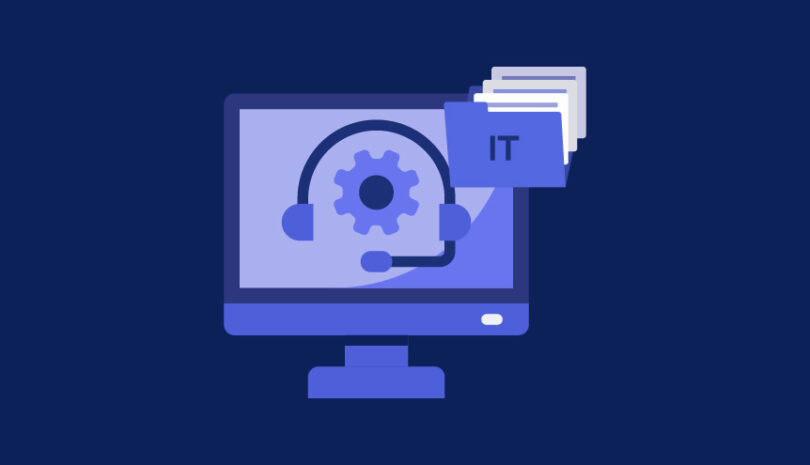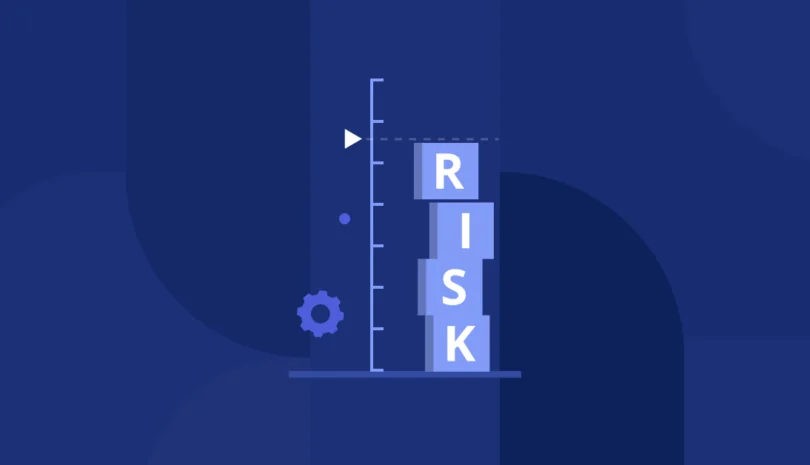Healthcare today runs on a complex web of third parties, including cloud platforms, SaaS providers, EHR vendors, billing services, diagnostic labs, and countless others. While these partnerships enable better care and streamlined operations, they also introduce significant risks. A single third-party data breach can expose thousands of patient records, trigger regulatory investigations, and disrupt critical services.
That’s where Health Third-Party Risk Management (TPRM) comes in. Health TPRM is the practice of identifying, assessing, and continuously monitoring the cybersecurity and compliance posture of every third party your organization relies on. It’s about being proactive by spotting weak links before they lead to problems and ensuring partners meet the same high standards you’re held to.
In a sector where lives (and reputations) are on the line, a strong TPRM program isn’t optional; it’s essential.
What Is Healthcare TPRM?
Health Third-Party Risk Management (Health TPRM) is the process of identifying, assessing, managing, and continuously monitoring the risks that third-party vendors pose to healthcare organizations. These third parties can include everything from electronic health record (EHR) providers and billing platforms to cloud services and medical device manufacturers.
At its core, Health TPRM ensures that the vendors you rely on are just as committed to protecting patient data and maintaining compliance as you are. That means focusing on several key areas:
- Data Security: Safeguarding sensitive health information (PHI) from breaches and unauthorized access.
- Regulatory Compliance: Ensuring third parties meet requirements under HIPAA, HITECH, GDPR, and other data protection laws.
- Service Continuity: Minimizing operational disruptions in the event of a vendor going offline or experiencing an incident.
- Ethical Practices: Verifying that partners uphold high standards around patient privacy, labor practices, and business conduct.
With the growing number of digital tools and vendors involved in healthcare delivery, Health TPRM has become a critical part of any organization’s cybersecurity and compliance strategy. It’s not just about checking boxes; it’s about protecting patients, building trust, and reducing risk in an increasingly interconnected ecosystem.
Why Third-Party Risk Management Matters in Healthcare
As healthcare grows more digital and interconnected, operational reliance on third-party vendors is no longer the exception, it’s the norm. From EHR platforms and billing systems to cloud storage and diagnostics, these partners are essential to daily operations. But with that reliance comes significant risk.
Healthcare organizations handle highly sensitive data, and Protected Health Information (PHI) is a prime target for cyberattacks. If a third-party vendor experiences a breach, the consequences can be severe, not just for the vendor but for the provider and their patients.
There’s also increasing regulatory enforcement to consider. Under laws like HIPAA, organizations are held responsible for vendor negligence. A single misstep can lead to major fines, lawsuits, and lasting reputational damage.
Finally, there’s the issue of public trust. Patients expect their data to be safe, no matter who is handling it. When providers use third-party services, that responsibility expands.
That’s why effective third-party risk management is a critical safeguard for patient privacy, operational resilience, and long-term credibility in the healthcare space.
Key Components of a Healthcare TPRM Program
A strong Health TPRM (Third-Party Risk Management) program goes beyond one-time vendor evaluations. It’s a continuous, structured approach to managing third-party risk at every stage of the vendor lifecycle. From onboarding to offboarding, healthcare organizations must ensure that external partners meet security, compliance, and operational standards. Below are five essential components of an effective Health TPRM framework. In the next couple of sections, we take a deeper look.
Vendor Inventory & Classification
The first step in any TPRM program is knowing who your third parties are. That means building a centralized inventory of all vendors, from EHR providers to billing services and cloud platforms. But it’s not just about listing names; each vendor should be categorized based on risk level. For example, a vendor with access to PHI would pose a higher risk than one providing non-sensitive office software. Classification helps prioritize which vendors need the most scrutiny and oversight.
Due Diligence & Risk Assessments
Before engaging with a vendor, healthcare organizations must perform thorough due diligence. This includes reviewing security questionnaires, verifying industry certifications (such as HITRUST or SOC 2), and checking references or past breaches. The goal is to understand the vendor’s security posture, compliance readiness, and overall trustworthiness before they gain access to your systems or data.
Contractual Safeguards
Contracts are a critical line of defense in third-party risk. Healthcare organizations must include Business Associate Agreements (BAAs) with any vendor handling PHI, as required under HIPAA. Beyond BAAs, contracts should outline breach notification requirements, data handling protocols, and other terms that define responsibilities, timelines, and consequences if something goes wrong. These safeguards ensure both parties are aligned and accountable.
Ongoing Monitoring & Reassessments
Risk doesn’t stop once a vendor is onboarded. Healthcare organizations must implement continuous monitoring to track security performance and receive alerts for policy violations, expired certifications, or emerging threats. Regular reassessments, annually or based on service changes, help ensure vendors maintain compliance and adapt to evolving risks. Monitoring helps turn your TPRM program into a living, responsive process.
Incident Response & Reporting
Despite best efforts, incidents can and do happen. That’s why it’s essential to have a clear incident response plan in place for third-party-related breaches or compliance failures. Define roles, responsibilities, and reporting workflows for both internal teams and vendors. Whether it’s a security breach, service outage, or regulatory issue, a fast and coordinated response minimizes damage and keeps you compliant.
Regulatory Frameworks That Influence Healthcare TPRM
Health TPRM isn’t just about good security; it’s also about staying compliant with a growing web of privacy and data protection regulations. Several key frameworks shape how healthcare organizations must manage third-party risks.
- HIPAA & HITECH are foundational. Covered entities are legally required to ensure that their business associates protect Protected Health Information (PHI) with appropriate safeguards. That includes having Business Associate Agreements (BAAs) and ensuring vendors maintain compliance throughout the relationship.
- GDPR, while European in origin, applies to any healthcare organization that processes the data of EU residents. It emphasizes vendor transparency, data minimization, and clear agreements about how personal data is used and protected.
- State-level privacy laws, such as the California Consumer Privacy Act (CCPA) and New York’s SHIELD Act, impose additional obligations, especially for organizations operating across multiple states. These laws often include breach notification timelines and vendor accountability clauses.
- The NIST Cybersecurity Framework serves as a widely accepted best practice model. It helps organizations assess, improve, and communicate their cybersecurity posture, especially valuable in building a scalable, standards-based TPRM program.
Together, these frameworks form the legal and operational backbone of any effective Health TPRM strategy.
Common Challenges in Healthcare TPRM
Even with the best intentions, healthcare organizations face significant obstacles when building and maintaining a Third-Party Risk Management program.
One of the most pressing issues is vendor sprawl. As more digital tools and external providers are added, it becomes difficult to track who has access to what. This leads to shadow IT, where unauthorized or unmanaged vendors slip through the cracks, increasing exposure.
Another challenge is limited internal resources. Security and compliance teams are often stretched thin, making it hard to keep up with vendor assessments, contract reviews, and monitoring tasks, especially for large health systems with hundreds of third parties.
A lack of automation and centralized oversight can also slow down the process. Without a unified platform to track vendor risk, teams may rely on spreadsheets or emails, leading to delays, human error, and missed red flags.
Finally, inconsistent risk classification across departments creates confusion. One team’s critical vendor may be another’s low priority, leading to gaps in oversight and inconsistent security expectations.
To overcome these challenges, organizations need to streamline their approach, leverage automation where possible, and build a unified, cross-functional TPRM process.
Healthcare TPRM Best Practices for Success
Building a successful Health TPRM program means balancing efficiency, compliance, and collaboration. Here are the key best practices that can help healthcare organizations strengthen their third-party risk posture:
- Prioritize critical vendors by using risk-based tiering. Not every vendor poses the same level of risk, so focus your time and resources where they matter most, on those handling PHI or supporting essential clinical functions.
- Use standardized tools like security questionnaires, risk scoring models, and frameworks (e.g., NIST or HITRUST) to evaluate vendors consistently and objectively.
- Collaborate across departments. Effective TPRM isn’t just IT’s job; bring in legal, procurement, compliance, and clinical teams to ensure a well-rounded view of vendor risk.
- Implement a centralized platform to track vendors, manage documentation, and streamline audits. This reduces manual work, improves visibility, and ensures nothing slips through the cracks.
A proactive, integrated approach allows healthcare organizations to stay ahead of threats, reduce compliance gaps, and build a more resilient third-party ecosystem.
Essential Healthcare TPRM
Health TPRM is essential. In a landscape where healthcare delivery relies on digital tools and external partners, managing third-party risk is critical for protecting sensitive data, ensuring uninterrupted care, and staying compliant with regulatory standards.
Organizations should take time to assess the maturity of their current TPRM practices. Are you tracking all vendors? Do you know which poses the greatest risk? Are your assessments consistent and audit-ready?
A good place to start is by identifying your most critical vendors (those with access to PHI or key services) and reviewing their compliance posture and security controls. From there, you can build a risk-based strategy that scales with your organization.
Panorays helps healthcare organizations centralize vendor risk management, automate assessments, and improve visibility across their third-party ecosystem. Book a personalized demo to see how Panorays can support your Health TPRM program.
Healthcare TPRM FAQs
-
Responsibility for Health Third-Party Risk Management (TPRM) is distributed across several teams within a healthcare organization. Typically, the IT and cybersecurity departments lead the charge on technical risk assessments and vendor security posture. However, legal and compliance teams are critical for ensuring adherence to regulations like HIPAA, HITECH, and the ONC Cures Act. Procurement teams play a key role during vendor selection and contract negotiation, while clinical and operational leaders help assess a vendor’s impact on care delivery and patient safety. Effective TPRM requires cross-functional governance, where all stakeholders share ownership of third-party risks throughout the vendor lifecycle.
-
A comprehensive Health TPRM program should cover the full vendor lifecycle; from onboarding to offboarding, and focus on both cybersecurity and regulatory compliance. Core components include:
- A centralized vendor inventory with classification based on risk
- Pre-contract due diligence and ongoing risk assessments
- Contractual safeguards such as Business Associate Agreements (BAAs)
- Continuous monitoring for security, compliance, and performance issues
- Defined processes for incident response and breach notification
- Integration with procurement and clinical workflows to ensure risk is managed in context
-
Yes, and automation is essential for scaling TPRM in complex healthcare environments. An automated platform can streamline the distribution and scoring of risk assessments, monitor vendor posture in real time, and ensure proper documentation for audits and reporting. Automation also supports alerting and remediation workflows, allowing teams to respond quickly to emerging risks. By reducing manual tasks, healthcare organizations can free up resources, enhance visibility, and improve compliance with industry regulations.



